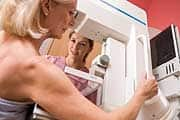Life Extension Magazine®
If I had to give you a single secret ingredient that could apply to the prevention—and treatment, in many cases—of heart disease, common cancers, stroke, infectious diseases from influenza to tuberculosis, type 1 and 2 diabetes, dementia, depression, insomnia, muscle weakness, joint pain, fibromyalgia, osteoarthritis, rheumatoid arthritis, osteoporosis, psoriasis, multiple sclerosis, and hypertension, it would be this: vitamin D. I have been traveling around the world not only lecturing about vitamin D but also hearing from physicians how common vitamin D deficiency is. It’s not only the most common nutritional deficiency in the world, but it’s also the most common medical condition, affecting at least one billion people. Three out of every four Americans are deficient in vitamin D, up from one out of two twenty years ago. A Hormone, Not a VitaminNaturally, we’re disposed to think about vitamin D as a vitamin—a substance that we get from our diets, like vitamin C or niacin, and that participates in biological reactions to help the body operate optimally. But despite its name, vitamin D isn’t really a vitamin. Vitamin D is in a class by itself; its far-reaching effects on the body are aligned with how hormones act to influence metabolic pathways, cellular functions, and the expression of myriad genes. Vitamin D’s active metabolic product in the body, in fact, is a molecule called 1,25-dihydroxyvitamin D (let’s call it 1,25-vitamin D for simplicity), which is a secosteroid hormone that directly or indirectly targets more than two thousand genes, or about 6 percent of the human genome. From Bone Health to Brain HealthContrary to what was previously believed—that vitamin D receptors were only in bones, intestines, and kidneys—we now know that vitamin D receptors are everywhere in the body. There is even proof that vitamin D receptors exist in the brain and that the active form of vitamin D stimulates the production of mood-elevating serotonin. This explains how it may help reduce depression (or just a chronically foul mood). Fat cells, too, have vitamin D receptors, and fat cells can be more metabolically active (burn more calories) if they have more vitamin D. People tend to think that fat cells are like inanimate blobs of lard when in fact they are active participants in the process by which your brain learns that you’re full and don’t need to take another bite of food. When you’ve had enough, fat cells secrete a hormone called leptin that allows you to push away from the table. A lack of vitamin D will interfere with this appetite-suppressing hormone whose job it is to regulate your body weight. And we all know what an unchecked appetite can lead to: weight gain and a higher risk of developing type 2 diabetes. Speaking of which, vitamin D deficiency has also been shown to exacerbate type 2 diabetes, impair insulin production in the pancreas, and increase insulin resistance.
Vitamin D and ObesityBecause vitamin D is stored in fat cells, you’d think that people with excess fat would have plenty of extra vitamin D on hand to make up any shortage. As it turns out, that thinking is wrong, and a parallel relationship exists between vitamin D deficiency and obesity. The fatter you are, the higher your risk for a deficiency. Why? The vitamin D essentially gets locked inside the fat cells, unavailable for use. In one of my studies, we exposed obese and nonobese individuals to the same amount of UVB radiation and showed that obese people can only raise their blood levels of vitamin D by about 45 percent compared to a normal-weight person. Obese people (defined as those with a body mass index, or BMI, above 30) often need at least twice as much vitamin D to satisfy their body’s needs. With the majority of Americans overweight or obese these days, it’s not a stretch to understand why a similar number of people are vitamin D deficient. The two epidemics have worsened in unison.
Obesity-related conditions now account for nearly 10 percent of all medical spending, having doubled in the last decade. It’s hard to believe that the obesity rate could rise 37 percent in just eight years alone, but that’s exactly what happened between 1998 and 2006—bringing a breathtaking one third of the adult American population into the obese camp. Why the spike in such a short time frame? We’ve evolved to store vitamin D in fat. This allows us to have ample supplies on hand during the long winter months, when it’s virtually impossible to make vitamin D—when the active synthesis of vitamin D from the sun is in hibernation until the spring. But humans did not evolve to carry such copious amounts of excessive fat. The result is that this fat begins to have negative effects on the body’s metabolism and hormonal balance. Contrary to what you might think, overweight people don’t have higher levels of 25-vitamin D due to their higher fat content. They have lower levels, because the excess fat absorbs and holds onto the vitamin D so that it cannot be used for bone building and cellular health. Unlike a normal-weight person, whose fat is continually being recycled so the vitamin D can be released, those with relatively immobile fat stores cannot access their vitamin D, which is literally locked up in their adipose tissue. Making matters worse, obese people are frequently vitamin D deficient to start with because they go outside much less. Obese people need two to three times more vitamin D a day than those of normal weight, so I advise such patients to take between 3,000 and 6,000 IU of vitamin D a day. Cracking One of Cancer’s Codes Breast Cancer
Here’s a staggering statistic: Women who are deficient in vitamin D at the time they are diagnosed with breast cancer are nearly 75 percent more likely to die from the disease than women with sufficient vitamin D levels. What’s more, their cancer is twice as likely to metastasize to other parts of the body. In the United States, more than forty thousand women die from breast cancer every year—making it the deadliest killer of women after heart disease. One woman in eight either has or will develop breast cancer in her lifetime. There are 214,000 new cases and 41,000 deaths from breast cancer each year in the United States. A 2008 study found that women who had a vitamin D deficiency at the time they were diagnosed with breast cancer were 94 percent more likely to have their cancer spread than women with adequate 25-vitamin D levels in their bodies. In May 1999, a landmark study by Dr. Esther John, based on the meticulous analysis of breast cancer statistics from the National Health and Nutrition Examination Survey, was published. The authors conclude definitively that sun exposure and a vitamin D–rich diet significantly lower the risk of breast cancer. Prostate CancerOnly heart attacks and lung cancer kill more men than cancer of the prostate. Cancer of the prostate is especially feared by men because surgical treatment for this form of cancer frequently results in impotence. A study in the August 2001 issue of the Lancet proves that the risk of developing prostate cancer is directly related to sunlight exposure. The study divided people into four groups according to how much sunlight they had been exposed to. The lowest quarter, or quartile, of the study participants were three times more likely to develop prostate cancer than those in the highest quartile of sun exposure. The results show that those in the highest quartile reduced their risk of developing prostate cancer by 66 percent. Those in the second and third quartiles also had a significantly lower chance of getting prostate cancer compared with those in the lowest quartile, who received the least sun exposure. Another study took a long look, over almost two years, at men with prostate cancer who received 2,000 IU of vitamin D a day and found that overall the men had a 50 percent reduction in the rise of their levels of prostate specific antigen (PSA), which is an indicator of prostate cancer activity.
Colon CancerCancer of the colon and its neighboring area, known sometimes as colorectal cancer, affects both men and women. Like breast cancer and prostate cancer, colorectal cancer is seen much more frequently than skin cancers and is much more deadly. About 150,000 Americans are told each year that they have colon cancer, and about 35 percent of these will die of it. A study published in the Journal of Clinical Oncology in 2008, conducted by lead researcher Dr. Kimmie Ng of the Dana-Farber Cancer Institute in Boston found that high blood levels of 25-vitamin D increased colon cancer patients’ survival rate by 48 percent. In this study, Dr. Ng and her team collected data on 304 patients who had been diagnosed with colon cancer between 1991 and 2002. Everyone in the study had had their 25-vitamin D blood levels measured a minimum of two years before being diagnosed with the disease. The patients were tracked until they died or until the study ended in 2005; 123 patients died, 96 of them from colon or rectal cancer during the follow-up period. Dr. Ng and her team found that the patients with the highest 25-vitamin D levels were 39 percent less likely to die from colorectal cancer than the patients who had the lowest levels. These findings are consistent with dozens and dozens of other observations that have been made in the past decade, including those by Dr. Cedric Garland. His lab reports that you are three times less likely to die from colon cancer if you have healthy levels of 25-vitamin D in your bloodstream. A New Model for Cancer?Though it’s a stretch to say vitamin D can totally prevent and cure cancer, some scientists have been bold enough to suggest a whole new theory about cancer. Just last year, the Garland brothers raised the possibility that there’s another story behind cancer’s genesis in the body. The current scientific model assumes that a genetic mutation is cancer’s point of origin. But what if that assumption is wrong? What if there is another way to explain how cancer develops? Those are the questions the Garlands put forth, which were published in the Annals of Epidemiology and immediately picked up by the media.
First, Dr. Cedric Garland and his team pointed to a host of research that suggests cancer develops when cells lose the ability to stick together in a healthy, normal way. He went on to argue that the key factor in this initial triggering of a malignancy could well be a lack of vitamin D. According to Dr. Garland, researchers have documented that with enough activated vitamin D present, cells adhere to one another in tissue and act as normal, mature cells. But if there is a deficiency of activated vitamin D, cells can lose this stick-to-each-other quality, as well as their identity as differentiated cells. The result? They may revert to a dangerous, immature state and become cancerous. What can stop this process from occurring, says Dr. Garland, is ample supplies of vitamin D in the body. Whether or not this theory can be proven true will be told by future studies and research. Testing, Testing, 1-2-3The only surefire way to know for certain the extent of your vitamin D deficiency is to ask for a 25-hydroxyvitamin D test, also called a 25(OH) D test. This is the circulating form of vitamin D that the liver generates and that then becomes activated by the kidneys. While it’s intuitive to think you’d want to test for the body’s “active form” rather than just a precursor, testing for the activated vitamin D (1,25-vitamin D) does not give an accurate portrayal of your vitamin D status. And here’s the rub: many doctors order the wrong test, and when the results come back showing a normal level of activated vitamin D, they think everything is D-okay. You could, however, be suffering from a serious deficiency even though your activated levels appear normal—or even elevated.
Editor's NoteScience continues to evolve, and new research is published daily. As such, we have a more recent article on this topic: Whole-Body Health with Vitamin D |





